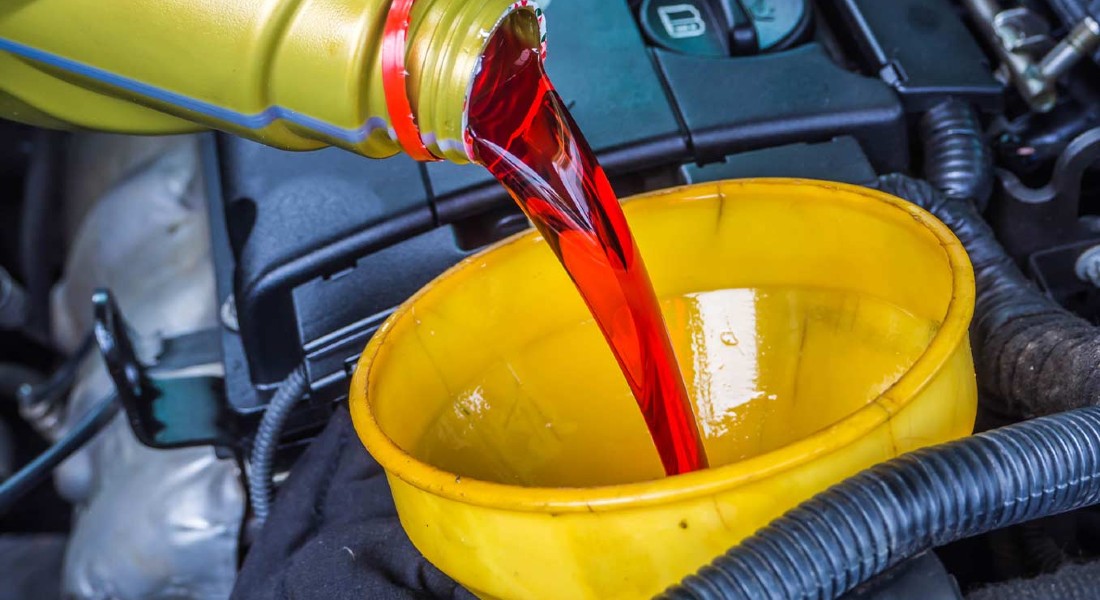Transmission fluid is important for lubricating the parts of your transmission and reducing wear and tear caused by friction and heat. While changing your transmission fluid won’t damage the condition of your transmission, if you haven’t been changing it frequently enough, you may discover that your transmission slips. Read on to find out why.
When should transmission fluid be changed?
While it seems obvious, tune-ups are super critical for maintaining your vehicle. You should always check your owner’s manual for
Every vehicle is different, so it’s no surprise that every car has different requirements for how often transmission fluid should be changed. Check your owner’s manual to find out how often you should change or check your transmission fluid. In most cars, you can check the transmission fluid by finding the transmission dipstick under the hood of your car while the engine is running. It’s usually located behind the oil dipstick. There will be markings on the dipstick indicating if there is enough transmission fluid, or if you need to add more.
To determine if you need to change the fluid, wipe the dipstick on a white paper towel or cloth and observe the color of the transmission fluid. If the fluid is bright pink, your transmission fluid is new and does not need to be changed. If the fluid is a light brown with a hint of pink, your transmission fluid will need to be replaced. If your transmission fluid hasn’t been changed in a long time, it will appear a very dark brown color and may even have metal particles floating in it, indicating the transmission is damaged.
If your vehicle takes lifetime transmission fluid, you should still check to make sure it’s in good condition around 100,000 miles, as the vent tubes that allow pressure in the transmission to equalize may also allow in moisture and dust.
How do I know whether to flush or change my transmission fluid?
First check your owner’s manual to make sure you know whether a flush or change of transmission fluid is typically recommended for your vehicle.
When changing your transmission fluid, you open the transmission drain located on the underside of the car. This allows about 40% to 50% of the transmission fluid to drain out into the pan. The other 50%-60% of the fluid remains in the torque converter and other parts of the transmission.
Flushing your transmission, on the other hand, allows you to completely change all of the fluid in the transmission. To flush your transmission, you attach a transmission hose to the input of the line that runs through the transmission and another hose to the output. Pumping new transmission fluid in pushes the old fluid out and into the outgoing hose.
Flushing your transmission fluid, rather than changing it, is only recommended if the transmission fluid is in relatively good shape and has no signs of damage. If you do a flush when there is damaged transmission material in the transmission fluid, you could cause a problem in the valve body at the bottom of the transmission. If the valve body gets gunked up with damaged transmission material, you could lose the ability to shift between gears. This is why many people worry that changing transmission fluid can cause a transmission to slip, but if you’re changing your transmission fluid regularly, you won’t have to worry about this problem.
Avoid damaging your transmission
Changing your transmission fluid frequently is the best way to ensure maximum longevity of your transmission. If you don’t change your transmission fluid frequently, the dirty fluid will not serve as an effective lubricant and it won’t disperse heat well. This will cause wear and tear on the clutches and other parts of your transmission. Once the clutch packs lose their grip, the old fluid might be the only thing creating enough friction to get your clutches to engage and keep your transmission from slipping.
Prevent damage to your transmission by making sure your transmission fluid is changed or flushed according to the owner’s manual. You can also check the owner’s manual to know what kind of transmission fluid your car takes, as there is a wide variety on the market with varying viscosities.

